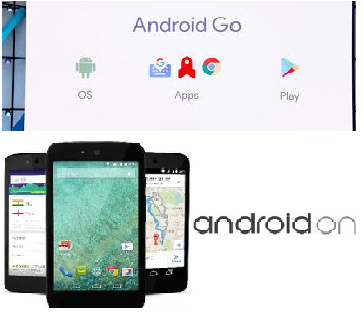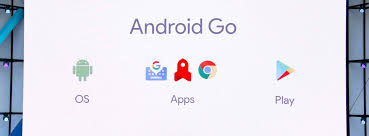
A year ago, at the Google I/O 2017 we saw a new version of Android dubbed as Android Go. The Go edition of Google’s mobile OS is basically a trimmed down Android version made for the low-end devices. This approach focuses on putting an Android phone with the latest OS and apps in everyone’s pocket.
We already had Android One platform, then why Android Go?
With 2 billion users, Android phones are one of the most widely used smartphones in the world. According to Google, their objective is to provide a smooth Android experience at low cost. The Android One phones are comparatively supposed to be costlier than the Android Go phones.
The Android Go initiative focuses on devices having limited memory, CPU horsepower and data connectivity. Android Go is designed to run on hardware with as little as 500MB of RAM and 4GB of internal storage. But how exactly are the two Android versions – One and Go – different from each other?
Android Go vs Android One – The Differences
To put it simply, Android One focuses on the following three set of specific rules –
- Stock Android: Google states that any manufacturer that wants to release an Android One smartphone can’t modify the operating system with custom skins.
- Regular Security Updates: For a manufacturer to build an Android One device, it is necessary to provide regular security updates.
- Strict Hardware Requirements: Google specifies a maximum hardware spec for Android One handsets. This is the reason we won’t ever see an Android One device with a Snapdragon 845 or other high end CPUs.
As you can see, with Android One, Google wants to control everything from the hardware to software updates. These devices are basically low cost Nexus devices.
Also Read – 6 ways to earn money through blogging
Android Go, on the other hand, is purely based on the software experience. The three key points about Android Go are –
- Custom OS: The Android Oreo (Go edition) is still Oreo but a lot trimmed down for lower-end hardware.
- Android Go has its own specific set of apps: The “Go” apps released by Google are for limited hardware.
- A modified Play Store: It is not all that different from the regular Play Store. The modified version highlights apps that will work best on limited hardware, like the Facebook Lite app.
Android Go also features better data management tools. Unlike Android One, it is pure software that can run on any hardware.
Android Go actually makes a lot of sense
Tried and tested – the Go apps from Google save a lot of space! For example – The Google app’s RAM usage is around 250MB while the Go version of the same app utilizes only 61MB of space. Isn’t that just mind-boggling? Yeah, there are compromises but the Go app performs all the necessary functions. Same goes for Maps Go and YouTube Go apps. Though one cannot subscribe to a channel via the Go app.
Theoretically, all this sounds amazing. But the difference in my testing and the original product is the actual availability of limited storage. I tested the Go versions of apps on my OnePlus 3T which was once known as the ‘flagship killer’. I had a lot of space on my phone while testing the apps.
In reality, the Android Go phones have limited horsepower and space available which causes lagging and slowing down of the low budget phones. Yes, due to the hardware, Android Go phones lag even while working on trimmed down versions of apps. And that is one of the reasons why Android Go phones don’t make any sense.
Also Read – Dual sim iPhone is coming soon but only to this country
Let me give you another real life example. The Nokia 1 – An Android Go phone from Nokia – was launched in India with a price tag of Rs 5,500. The specs include 1 GB RAM, 8GB ROM and a low end processor. In contrast to that, Xiaomi Redmi 5A is available for Rs 5,999 and the specifications include 2 GB ROM, 16GB ROM, a better display, battery and processor – double the amount of RAM, ROM and better specifications all around for a mere Rs 500 more
Why would a consumer buy an Android Go phone aver a full-fledged Android phone in the same price range? Apart from all this, the Android Go devices have hardware limitations too. The display on these devices is limited to 480p.
At max Android Go devices should be priced at Rs 3k. Otherwise, it doesn’t make any sense at all to clutter the already saturated smartphone market with more devices.
Also Reaad – Confirmed: These smartphones will get Android Pie. Is your phone on the list?
If the Go devices don’t make any sense then why the Android Go initiative?
The way I look at it, I see Android Go benefiting the users of low-end devices (sub Rs 8k range) like Moto E3 or even Moto E2. These devices are capable of running Android Go apps with ease. If you are having issues with your low-end device, try installing the Go apps and you are good to go.
Concluding, the Android Go initiative doesn’t stand on its promises. While the software is good enough to even run on a couple of years old device, the hardware part of this initiative definitely needs improvement. Google has asked the developers to make a Go edition of their apps and hopefully, we will get to a point in future where everything works as promised by Google.



